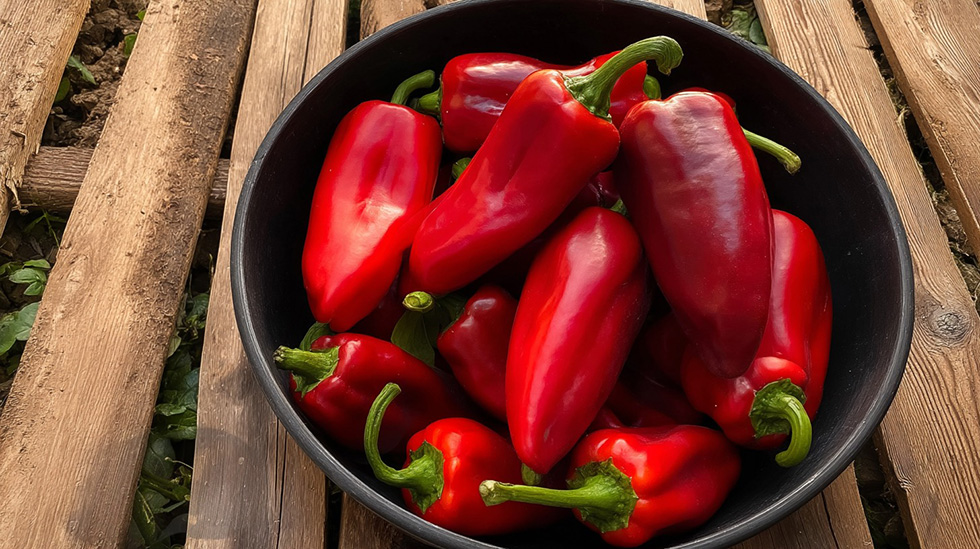Kapia pepper – the red wonder that every household loves
If there’s one vegetable that Hungarian housewives have taken to their hearts, it’s the paprika. It’s no coincidence: sweet, fleshy, beautifully coloured, and simply goes with everything. But where did it come from, what’s inside, how to store it and what to look out for when buying it? Follow me and all will be revealed! 🌶️😉

Key facts about the kapia pepper
Kapia pepper is the sweet, elongated, red fruit of the Capsicum annuum species. It is sometimes called ‘kapia’ or ‘kapia-type pepper’, but in shops it is typically referred to simply as kapia pepper.
It originated in Central and South America and was known and used by ancient civilisations such as the Mayans and Aztecs. It was introduced to Europe by explorers in the 15th and 16th centuries and is now a prominent cultivator in the Balkans, particularly in Serbia and Hungary.
How important is it in the kitchen?
Rating: 5/5
The kapia pepper is one of the stars of not only Hungarian, but also Balkan and Mediterranean cuisine. It is also excellent roasted, stuffed, sliced into salads or blended into sauces. The taste is rich, sweet and full – a real Jolly Joker if you want a quick and tasty meal.
Edible parts of the plant
The edible part of the kapia pepper is the red, fleshy fruit. They are best eaten when fully ripe, when they are bright red, when they are at their tastiest and sweetest. The seed coat, stem and seeds are not edible and should always be removed.
Health benefits
Kapia pepper is a vitamin bomb! It is extremely high in vitamin C – more than oranges per gram – but also contains vitamin A, vitamin E, folic acid and antioxidant carotenoids.
- Strengthens the immune system
- Helps skin and eye health
- Anti-inflammatory action
- Supports cardiovascular health
In traditional medicine, it is also often used as a blood purifier and digestive stimulant.
Growing and season
Kapia pepper is grown mainly in the Balkans and Central Europe. Serbia is one of the largest producers in Europe, but it is also becoming increasingly popular in Hungary. In Hungary, it is mostly grown in the open field, but greenhouse technologies are also developing.
The season lasts from mid-summer to the end of autumn, so you can find fresh Hungarian kapia paprika in the shops from July to October. In winter, you’ll find more imports, typically from Spain or Turkey.
How to choose good quality kapia pepper?
- Colour should be bright red, with a uniform, shiny skin
- It should be firm to the touch, not soft or wrinkled
- The stems should be fresh green, not wilted
- Avoid stained, cracked or pressed pieces
Choosing a good kapia pepper is not difficult, it just requires a little attention.
Storage
Store in the fridge after purchase, preferably in the vegetable storage compartment. An airtight box or perforated bag will help to keep it fresh. It will keep for up to 5-7 days. Do not wash in advance, only immediately before use.
Cuisines of the world and the kapia pepper
- Hungary: fried, in lecsó, in salads
- Serbia: ajvar, stuffed peppers
- Italy: roasted peppers on bruschetta
- Spain: grilled as part of tapas
- Turkey: served with yoghurt sauce
Many kitchens around the world have discovered the kapia pepper – no wonder, it can be found in almost every dish!
Iconic recipe: roasted paprika and paprika cream (ajvar)
One of the best-known recipes is ajvar, which originated in the Balkans. The peppers are roasted in an oven (or on coals) until the skin is blackened, then peeled off and the flesh is mashed with garlic, salt, oil and sometimes aubergine.
